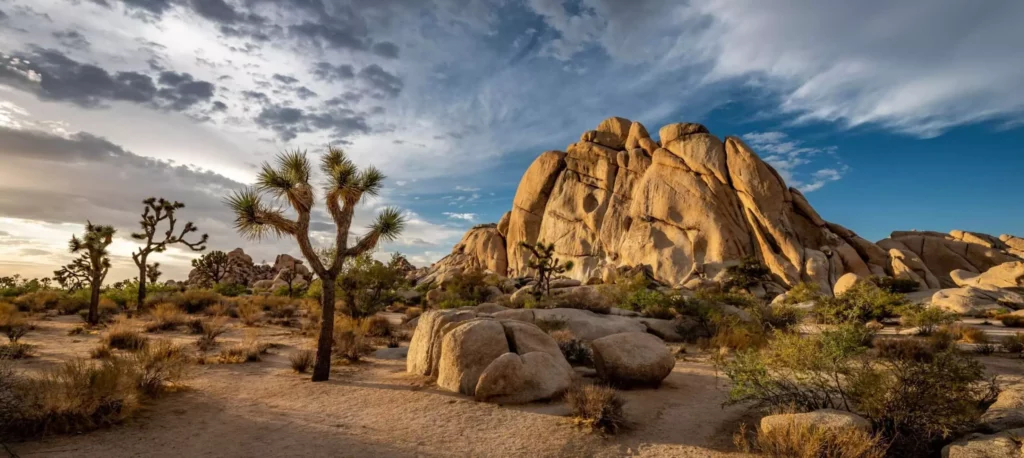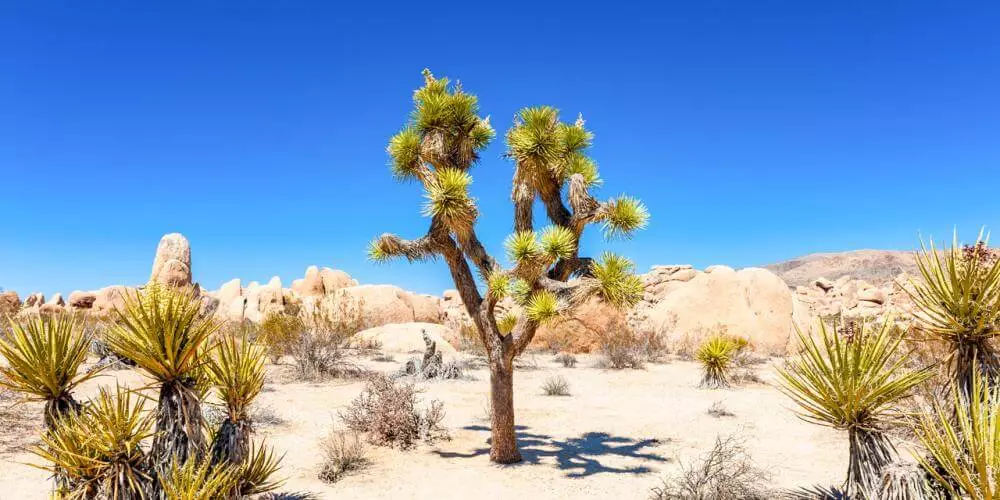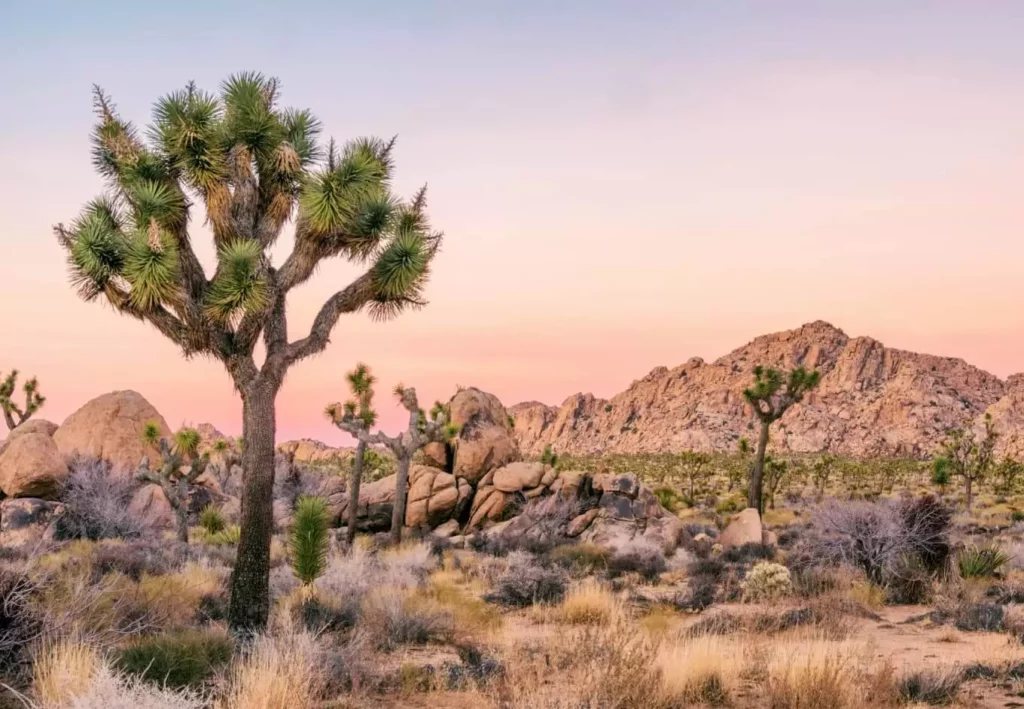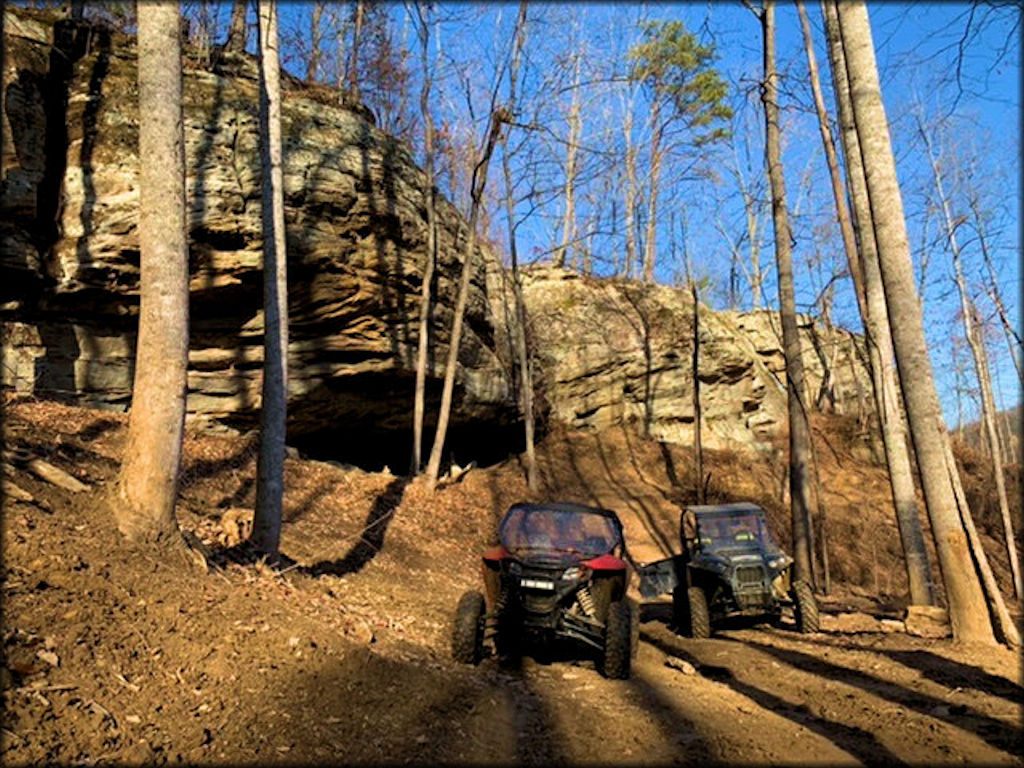Joshua Tree National Park: Discover the Majestic Natural Wonders of a Desert Oasis
Step into Joshua Tree National Park, a desert oasis filled with breathtaking natural wonders. Witness the towering Joshua Trees, admire the captivating rock formations, and explore hidden oases like Palm Springs. Marvel at the star-studded night sky and encounter the resilient desert wildlife. Each visit unveils a new adventure, leaving you in awe of the park’s beauty. Embrace the magic of Joshua Tree National Park and its extraordinary landscapes.
Content

Joshua Trees: Iconic Symbols of the Park
As I entered Joshua Tree National Park, the sight of the towering Joshua Trees left me in awe. These magnificent trees are not only iconic symbols of the park but also hold great significance in the desert ecosystem. Their distinct appearance, with their twisted branches and spiky leaves, instantly draws attention and creates a unique ambiance in the arid landscape.
The Joshua Trees have a fascinating life cycle and remarkable adaptations that allow them to thrive in the harsh desert conditions. They are classified as yucca plants and belong to the agave family. With an average lifespan of 150 to 200 years, these ancient beings have witnessed the passage of time in this desert oasis.
One of the most incredible adaptations of Joshua Trees is their ability to survive in arid environments with minimal water resources. They have evolved specialized root systems that can absorb water efficiently, making the most of the scarce rainfall in the desert. The presence of waxy leaves helps reduce water loss through transpiration, enabling them to conserve moisture.
Also Read: Road Trip along the Pacific Coast Highway: California’s Scenic Route
Hidden Oasis: The Wonderland of Palm Springs
As I ventured into Joshua Tree National Park, I discovered a hidden gem tucked away amidst the desert landscape – the enchanting oasis of Palm Springs. This oasis, with its lush palm groves and abundant water sources, is a true wonderland within the arid environment. Let’s explore the magic of this oasis and delve into its unique features that make it a sanctuary of life.
Oasis of Mara and other palm groves within the park
One of the prominent palm groves within Palm Springs is the Oasis of Mara. This oasis holds immense historical significance, as it was named by the indigenous Serrano people, who considered it a sacred place. The Oasis of Mara is home to a dense concentration of California fan palms, providing shade and respite from the desert heat.
Apart from the Oasis of Mara, there are several other palm groves scattered throughout the park. These groves, with their towering palms swaying gently in the breeze, offer a serene and tranquil atmosphere. Some notable palm groves include Hidden Valley, Lost Palms, and Cottonwood Springs.
Iimportance of water sources in the desert ecosystem
Water sources are scarce in the desert, making oases like Palm Springs crucial for the survival of various species. These oases act as vital watering holes in the arid landscape, attracting a diverse array of wildlife. The presence of reliable water sources sustains not only plant life but also provides a lifeline for animals in need of hydration.
The oasis ecosystems thrive around the presence of natural springs, where groundwater emerges from the earth’s depths. These springs, combined with occasional rainfall and underground aquifers, create a sustainable water supply for the palms and other plant species that flourish in the oasis.
Unique plant and animal species found in the oasis
The oasis of Palm Springs harbors a fascinating array of plant and animal life. The California fan palms, with their distinctive fan-shaped fronds, dominate the landscape, creating a picturesque scene. These palms serve as vital habitat for various bird species, such as the verdin, which build intricate nests within the fronds.
Within the oasis, one may encounter desert pupfish, a species known for its ability to survive in extremely warm and brackish waters. These small, resilient fish have adapted to the harsh desert conditions and are a testament to the oasis’s role in supporting unique and specialized species.
Other plant species found in the oasis include mesquite trees, desert lavender, and desert willows. These plants contribute to the overall biodiversity of the oasis and provide food and shelter for a myriad of insects, birds, and small mammals.

Spectacular Hiking Trails: Exploring the Wilderness
As I stepped foot into Joshua Tree National Park, I couldn’t wait to embark on the thrilling adventure of exploring its spectacular hiking trails. The park offers a diverse range of trails, catering to hikers of all levels of experience and fitness. Let’s delve into the wonders that await along these trails, from hidden valleys to ancient rock formations, and learn how to make the most of this exhilarating hiking experience.
Park’s hiking trails and their varying difficulty levels
Joshua Tree National Park boasts an extensive network of hiking trails, each with its own unique charm and level of difficulty. Whether you’re a beginner seeking a leisurely stroll or an experienced hiker craving a challenging ascent, the park has a trail suited to your preferences.
The trails in the park range from easy and family-friendly to more strenuous routes that require physical fitness and endurance. It’s important to assess your capabilities and choose a trail that aligns with your fitness level and hiking experience. Always consult the park’s trail maps and informational signs to familiarize yourself with the trail’s length, elevation gain, and any potential hazards.
Popular trails like Hidden Valley, Barker Dam, etc.
- Hidden Valley Trail: As I ventured along the Hidden Valley Trail, I found myself immersed in a hidden oasis of natural beauty. This one-mile loop leads you through towering rock formations and unveils a secluded valley adorned with an abundance of plant life. The trail showcases the unique rock formations and offers a glimpse into the park’s diverse flora and fauna.
- Barker Dam Trail: The Barker Dam Trail is a captivating journey into the park’s rich cultural and natural history. This moderate two-mile loop takes you past a historic dam constructed by early cattle ranchers and offers breathtaking views of the surrounding desert landscape. Along the trail, keep an eye out for petroglyphs left behind by Native American tribes, providing a glimpse into their ancient civilization.
Safety precautions and essential hiking gear recommendations
While exploring the hiking trails of Joshua Tree National Park, it’s essential to prioritize safety and be adequately prepared for the wilderness. Here are some crucial safety precautions and recommended gear to ensure a safe and enjoyable hiking experience:
- Stay hydrated: Carry an ample supply of water, especially during the hot summer months. It’s advisable to drink at least one liter of water for every two hours of hiking.
- Dress appropriately: Wear sturdy, comfortable hiking shoes and dress in layers to accommodate changing weather conditions. Protect yourself from the desert sun by wearing a wide-brimmed hat, sunglasses, and sunscreen.
- Navigation tools: Carry a detailed trail map, compass, or a reliable GPS device to ensure you stay on the designated trail and don’t get lost.
- Emergency essentials: Pack a basic first aid kit, a whistle for signaling, and a flashlight with extra batteries. It’s also wise to bring a fully charged mobile phone for emergencies, although reception may be limited in certain areas.
- Leave no trace: Respect the park’s natural environment by packing out any trash and minimizing your impact on the ecosystem. Follow the principles of Leave No Trace, such as staying on designated trails and avoiding disturbing wildlife.
As I hiked through the breathtaking landscapes of Joshua Tree National Park, each trail offered a unique and unforgettable experience. The tranquility of the hidden valleys, the awe-inspiring rock formations, and the rich history embedded in every step made it a truly remarkable journey.
Tips for Visiting Joshua Tree National Park
As I reflect on my own unforgettable experience exploring Joshua Tree National Park, I want to share some valuable tips that will help make your visit to this magnificent desert oasis a truly memorable one. From choosing the best time to visit to understanding park regulations and finding the perfect camping spot, here are some essential tips to ensure a safe, enjoyable, and fulfilling adventure.
Seasonal considerations and the best time to visit
When planning your visit to Joshua Tree National Park, it’s crucial to consider the seasonal variations and choose the best time that aligns with your preferences and interests. Here are a few key points to keep in mind:
- Spring (March to May): This season brings mild temperatures and vibrant wildflower blooms, transforming the park into a picturesque paradise. It’s an ideal time for hiking and exploring the park’s diverse ecosystems.
- Summer (June to August): Summers in Joshua Tree can be scorching, with temperatures soaring above 100°F (38°C). However, early mornings and late evenings can still offer pleasant conditions for outdoor activities. Be sure to stay hydrated and seek shade during the hottest hours of the day.
- Fall (September to November): Fall brings cooler temperatures, making it a popular time to visit. The park becomes alive with autumn colors, and wildlife activity increases. It’s a great time for hiking, stargazing, and enjoying the tranquility of the park.
- Winter (December to February): Although winter brings cooler temperatures, it’s still an excellent time to explore Joshua Tree. The park offers a peaceful and uncrowded experience, with occasional snowfall adding a touch of magic to the desert landscape.
Park regulations and visitor guidelines for a safe and enjoyable experience
To ensure a safe and respectful visit to Joshua Tree National Park, it’s essential to familiarize yourself with the park’s regulations and follow visitor guidelines. Here are some key points to remember:
- Stay on designated trails: Help preserve the park’s fragile desert ecosystem by staying on established trails and avoiding off-trail exploration. This protects the sensitive desert vegetation and minimizes erosion.
- Respect wildlife: Observe wildlife from a safe distance and never feed or approach them. Remember that you are a guest in their natural habitat, and interfering with their behavior can be harmful to both the animals and yourself.
- Leave no trace: Practice Leave No Trace principles by properly disposing of trash, minimizing noise pollution, and leaving natural and cultural features untouched. This ensures the preservation of the park’s beauty for future generations.
- Be prepared: Carry plenty of water, wear appropriate clothing and footwear, and bring essential supplies like sunscreen, hats, and maps. Inform someone about your hiking plans and expected return time, especially if venturing into remote areas.
Recommendations for camping, lodging, and nearby attractions
To fully immerse yourself in the wonder of Joshua Tree National Park, consider these recommendations for camping, lodging, and exploring nearby attractions:
- Camping: The park offers several campgrounds with varying amenities. Reservations are recommended, especially during peak seasons. If you prefer a more secluded experience, backcountry camping is available with a permit. Remember to follow all camping regulations and leave your campsite clean and undisturbed.
- Lodging: If camping isn’t your preference, there are accommodations available in nearby towns such as Joshua Tree, Twentynine Palms, and Palm Springs. From cozy cabins to luxurious resorts, you can find a lodging option that suits your needs and budget.
- Nearby attractions: Take advantage of the park’s proximity to other attractions in the region. Visit the Joshua Tree Music Festival, explore the quaint shops and galleries in the town of Joshua Tree, or venture into the captivating landscapes of nearby national parks like Death Valley or Mojave National Preserve.

By considering the seasonal variations, respecting park regulations, and making informed decisions about camping, lodging, and nearby attractions, you’ll be well-prepared to embark on an incredible journey through Joshua Tree National Park. Let the desert’s serenity and beauty captivate you as you create memories that will last a lifetime.
Conclusion
In conclusion, the natural wonders of Joshua Tree National Park create a desert oasis like no other. From the iconic Joshua Trees to the hidden oases, every aspect of this remarkable landscape invites exploration and awe. By embracing the park’s unique charm, practicing safety precautions, and taking advantage of nearby attractions, visitors can truly immerse themselves in the captivating beauty of this desert paradise.
FAQ’S
u003cstrongu003eWhat makes Joshua Tree National Park a unique desert oasis?u003c/strongu003e
Joshua Tree National Park stands out as a desert oasis due to its remarkable natural wonders. From the iconic Joshua Trees that lend their name to the park to the hidden oases scattered throughout, it offers a captivating blend of desert landscapes and unexpected beauty.
u003cstrongu003eAre there any safety concerns when exploring Joshua Tree National Park?u003c/strongu003e
While Joshua Tree National Park is a remarkable destination, it’s essential to be aware of potential safety concerns. The desert environment can be harsh, with extreme temperatures and limited water sources.
u003cstrongu003eWhat are the best times to visit Joshua Tree National Park?u003c/strongu003e
The best time to visit Joshua Tree National Park largely depends on personal preferences and desired experiences. Spring (March to May) offers pleasant temperatures and vibrant wildflower blooms. Summer (June to August) can be hot, but early mornings and evenings are more manageable. Fall (September to November) brings cooler temperatures and stunning autumn colors. Winter (December to February) provides a tranquil atmosphere and occasional snowfall, creating a unique desert experience.
u003cstrongu003eCan I camp in Joshua Tree National Park, and how do I make reservations?u003c/strongu003e
Yes, camping is available within the park. Joshua Tree National Park offers several campgrounds, each with its own amenities and levels of accessibility. It’s recommended to make reservations in advance, especially during peak seasons, to secure your preferred camping spot.
u003cstrongu003eAre there any nearby attractions worth exploring in addition to Joshua Tree National Park?u003c/strongu003e
Absolutely! In addition to Joshua Tree National Park, the surrounding area offers various attractions worth exploring. The town of Joshua Tree itself boasts charming shops, art galleries, and restaurants that embody the unique desert culture.

Hello, I’m Rex Crist. My goal is to show that traveling can be affordable and fun! I love to explore new places and experience different cultures. I also like iced coffee, iced tea, and ice cream (in that order).




